Scientists have discovered that the periaqueductal gray (PAG) area in a rat’s brain is crucial for play and laughter, with both tickling and play triggering strong neural responses. If the PAG is inhibited or the rats are in an anxiety-provoking environment, they play less and their laughter diminishes, suggesting that play is a more instinctual behavior and the PAG controls this process.
In order to examine play behaviors in animals like rats, scientists are required to be able to authentically simulate play-conducive environments in the laboratory. If rats feel anxious or restrained, they are less likely to engage in play, and very little information exists regarding the brain activity of freely playing rats.
After getting rats comfortable with a human playmate, tickling them under controlled conditions, then measuring the rats’ squeaks and brain activity, a research team reports on July 27 in the journal Neuron that a structure in rat brains called the periaqueductal gray is essential for play and laughter.
“We know that vocalizations such as laughter are very important in play, which supported the idea that there is some sort of organization signal in the brain regulating this behavior,” says senior author Michael Brecht, a neuroscientist at the Humboldt-Universität zu Berlin. “For example, children check for laughter when they play-fight with each other. If their playmate isn’t laughing anymore, they stop fighting.”
Researchers play with rats. Credit: Natalie Gloveli
Play is one of the least understood types of behavior, and scientists currently do not know the neural pathways that control the playfulness of humans or other animals. To learn more about the neuroscience of play, these researchers first ensured that the rats they studied were free to move around throughout the experiment. In addition, they gave the rats a few days to get accustomed to their new environment.
Once the rats were comfortable, the researchers played games of “chase the hand” with them and tickled the rats on their backs and bellies. Rats don’t laugh the way humans do, but when amused, they do squeak at a high-pitched tone that humans cannot hear. The researchers monitored this sound to ensure that the rats were having fun.
Graphical Abstract. Credit: Neuron Gloveli et al.
When looking at these animals’ brain activity, the researchers found strong neural responses to both tickling and playing in the lateral column of the periaqueductal gray, or PAG. If this part of the brain was inhibited, the rats stopped engaging in play as much and did not laugh as frequently. On the other hand, if the rats were put in an unfamiliar environment that was designed to provoke anxiety, they also stopped laughing, and the tickling- and play-responsive cells in the lateral column of the PAG decreased their activity.
The PAG is located in the midbrain, and it has been known in the past to control vocalizations and the fight-or-flight response. Play-fighting can also invoke a fight-or-flight response, which might be one explanation for the PAG’s role in play. Prior research has shown that playfulness persists even if the cortex, which controls consciousness, fails to develop, which suggests that play is a more instinctual behavior.
“A lot of people think that play is childish or not a very decisive behavior, but play is underrated,” says Brecht. “In my perception of play, it’s a self-training behavior. Usually, brains serve for controlling behaviors. Play behaviors, however, seem to serve for growing brains.”
Next, the researchers plan on seeing if they observe similar activity in the lateral column of other animals when they are being played with, which could allow them to compare the playfulness of different species. They also plan to see if giving younger rats different play habits might change the way that the lateral column of the PAG develops.
Reference: “Play and tickling responses map to the lateral columns of the rat periaqueductal gray” by Natalie Gloveli, Jean Simonnet, Wei Tang, Miguel Concha-Miranda, Eduard Maier, Anton Dvorzhak, Dietmar Schmitz and Michael Brecht, 28 July 2023, Neuron.
DOI: 10.1016/j.neuron.2023.06.018
The study was funded by the Humboldt-Universität zu Berlin, the Bernstein Center for Computational Neuroscience Berlin, NeuroCure Cluster of Excellence, Einstein Center for Neurosciences Berlin, Deutsche Forschungsgemeinschaft, European Research Council.


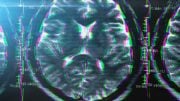
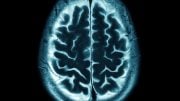




Be the first to comment on "Tickling the Truth Out: Scientists Identify Part of the Brain Critical for Laughter and Playfulness"